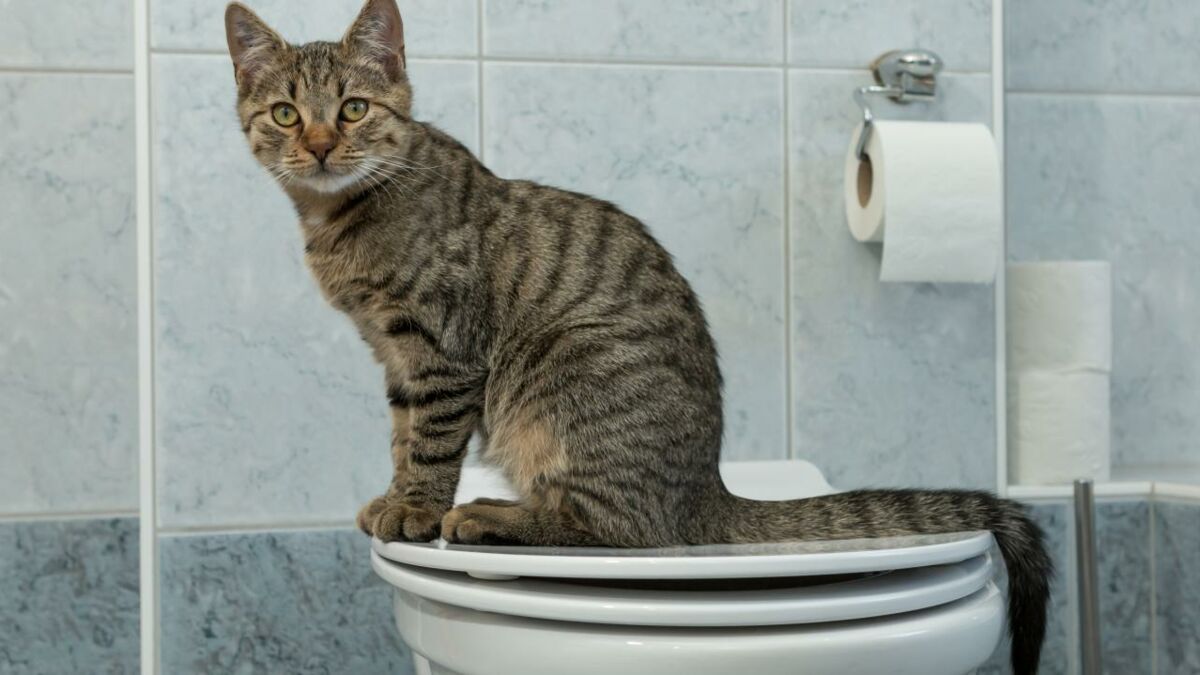The article which follows on the subject of Don’t flush cat feces down the toilet is incredibly remarkable. Don't miss out on it.

Intro
As pet cat owners, it's vital to bear in mind exactly how we get rid of our feline buddies' waste. While it may seem hassle-free to flush pet cat poop down the commode, this practice can have detrimental consequences for both the atmosphere and human wellness.
Environmental Impact
Purging cat poop introduces unsafe microorganisms and bloodsuckers into the water, posing a substantial risk to aquatic ecological communities. These contaminants can negatively impact marine life and compromise water high quality.
Health and wellness Risks
Along with environmental problems, purging cat waste can additionally posture health and wellness risks to people. Pet cat feces may include Toxoplasma gondii, a bloodsucker that can create toxoplasmosis-- a possibly severe health problem, particularly for pregnant women and people with damaged body immune systems.
Alternatives to Flushing
Fortunately, there are safer and more responsible methods to get rid of cat poop. Consider the adhering to choices:
1. Scoop and Dispose in Trash
One of the most common method of disposing of pet cat poop is to scoop it into an eco-friendly bag and throw it in the garbage. Make sure to utilize a specialized clutter scoop and get rid of the waste without delay.
2. Use Biodegradable Litter
Opt for naturally degradable cat trash made from products such as corn or wheat. These litters are eco-friendly and can be securely gotten rid of in the garbage.
3. Bury in the Yard
If you have a yard, consider burying cat waste in a designated location far from veggie yards and water sources. Be sure to dig deep enough to prevent contamination of groundwater.
4. Set Up a Pet Waste Disposal System
Purchase a family pet waste disposal system specifically designed for pet cat waste. These systems utilize enzymes to break down the waste, decreasing smell and environmental impact.
Conclusion
Liable family pet ownership extends past supplying food and shelter-- it also includes proper waste monitoring. By refraining from purging cat poop down the toilet and going with alternate disposal approaches, we can lessen our environmental footprint and protect human health and wellness.
Why Can’t I Flush Cat Poop?
It Spreads a Parasite
Cats are frequently infected with a parasite called toxoplasma gondii. The parasite causes an infection called toxoplasmosis. It is usually harmless to cats. The parasite only uses cat poop as a host for its eggs. Otherwise, the cat’s immune system usually keeps the infection at low enough levels to maintain its own health. But it does not stop the develop of eggs. These eggs are tiny and surprisingly tough. They may survive for a year before they begin to grow. But that’s the problem.
Our wastewater system is not designed to deal with toxoplasmosis eggs. Instead, most eggs will flush from your toilet into sewers and wastewater management plants. After the sewage is treated for many other harmful things in it, it is typically released into local rivers, lakes, or oceans. Here, the toxoplasmosis eggs can find new hosts, including starfish, crabs, otters, and many other wildlife. For many, this is a significant risk to their health. Toxoplasmosis can also end up infecting water sources that are important for agriculture, which means our deer, pigs, and sheep can get infected too.
Is There Risk to Humans?
There can be a risk to human life from flushing cat poop down the toilet. If you do so, the parasites from your cat’s poop can end up in shellfish, game animals, or livestock. If this meat is then served raw or undercooked, the people who eat it can get sick.
In fact, according to the CDC, 40 million people in the United States are infected with toxoplasma gondii. They get it from exposure to infected seafood, or from some kind of cat poop contamination, like drinking from a stream that is contaminated or touching anything that has come into contact with cat poop. That includes just cleaning a cat litter box.
Most people who get infected with these parasites will not develop any symptoms. However, for pregnant women or for those with compromised immune systems, the parasite can cause severe health problems.
How to Handle Cat Poop
The best way to handle cat poop is actually to clean the box more often. The eggs that the parasite sheds will not become active until one to five days after the cat poops. That means that if you clean daily, you’re much less likely to come into direct contact with infectious eggs.
That said, always dispose of cat poop in the garbage and not down the toilet. Wash your hands before and after you clean the litter box, and bring the bag of poop right outside to your garbage bins.
https://trenchlesssolutionsusa.com/why-cant-i-flush-cat-poop/

I discovered that write up about Can You Flush Cat Poop Down The Toilet? while browsing the web. Are you aware of someone else who is occupied with the subject? Please feel free to promote it. Thanks for your time. Don't hesitate to check our site back soon.
Schedule A Service